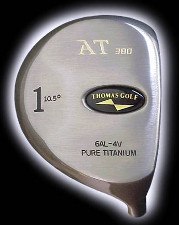
The Golf Term “Drivers”
When it comes to golf, the term “drivers” refers to a specific type of golf club that is designed for hitting long-distance shots off the tee. The driver is typically the longest club in a golfer's bag and is used to achieve maximum distance with a well-executed swing.
Here are a few key points to know about drivers:
- Shaft: Drivers have a relatively longer shaft compared to other golf clubs. A longer shaft allows for greater clubhead speed, which can result in increased distance when the ball is struck properly.
- Loft: The driver's clubface has a specific loft angle, usually ranging from 8 to 14 degrees. A lower loft angle creates less backspin on the ball, promoting a more penetrating and longer ball flight. Higher loft angles, on the other hand, can help golfers achieve better accuracy and control.
- Clubhead Size: Another distinctive feature of drivers is their oversized clubheads. The larger clubhead size increases the club's “sweet spot” – the area on the face where striking the ball produces the most favorable results. This helps golfers achieve better distance even on off-center hits.
- Governing Rules: In professional golf, there are regulations regarding the maximum size and characteristics of drivers. These rules ensure a level playing field and prevent golfers from gaining an unfair advantage.
When using a driver, it is important to remember a few tips:
- Proper Tee Height: Use an appropriate tee height to ensure that the ball is positioned correctly in relation to the clubface. The top of the driver's clubface should align with the top of the ball or slightly above it.
- Address Position: Stand with your feet slightly wider than shoulder-width apart and position the ball in line with the inside of your front foot. This setup promotes an upward strike on the ball for maximum distance.
- Swing Technique: The driver swing differs from other clubs in that it requires a sweeping motion rather than a downward strike. Focus on smoothly sweeping the clubhead along the ground and through the ball.
- Practice: Like any other aspect of golf, becoming proficient with the driver requires practice. Spend time on the driving range honing your technique and understanding how different swing adjustments affect your shots.
Overall, the driver is a vital club in a golfer's arsenal, particularly for long-distance shots. Its longer shaft, specific loft angle, larger clubhead size, and distinct swing technique all contribute to achieving maximum distance off the tee. By mastering these aspects and incorporating regular practice, golfers can make the most of their time on the course and improve their overall game.
- Golf Drivers – Reviews & Tips
- Thomas Golf AT460 TO Offset Drivers: Offset Hosel Offers Slice Shot Relief
- Why Do Women Golfers Use Different Swings For Drivers And Irons When Playing Golf Shots?
- Why do Women Golfers use Different Swings for Drivers and Irons when Playing Golf Shots Video – by Natalie Adams





